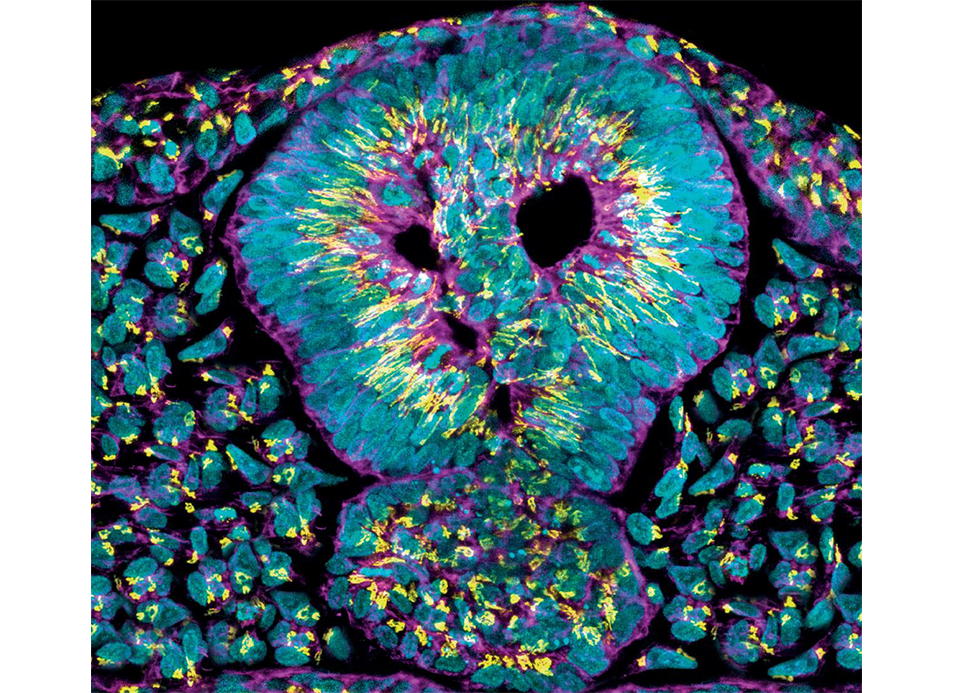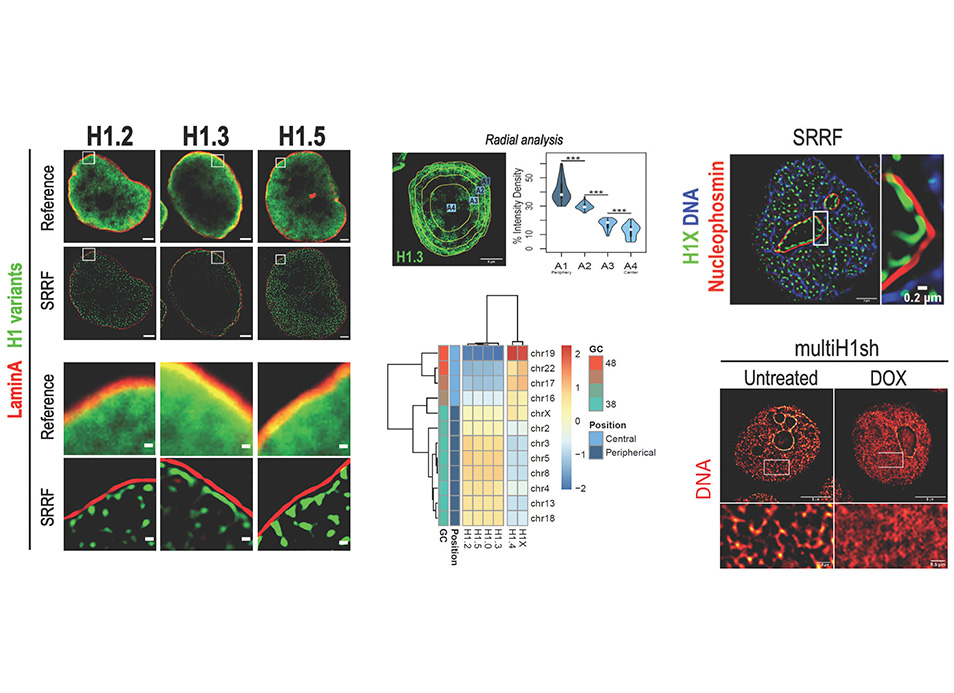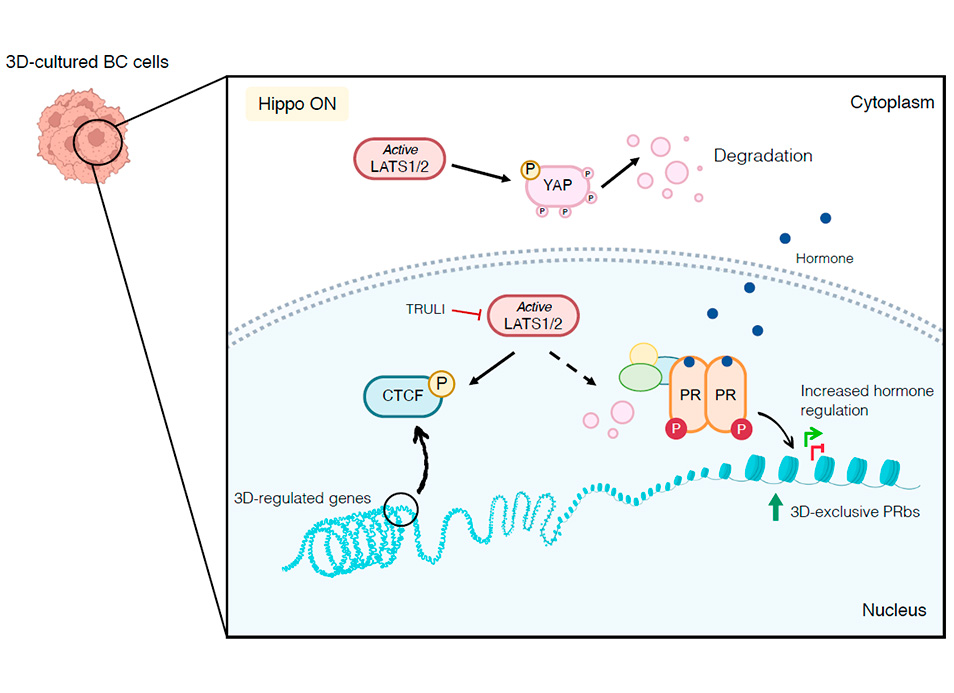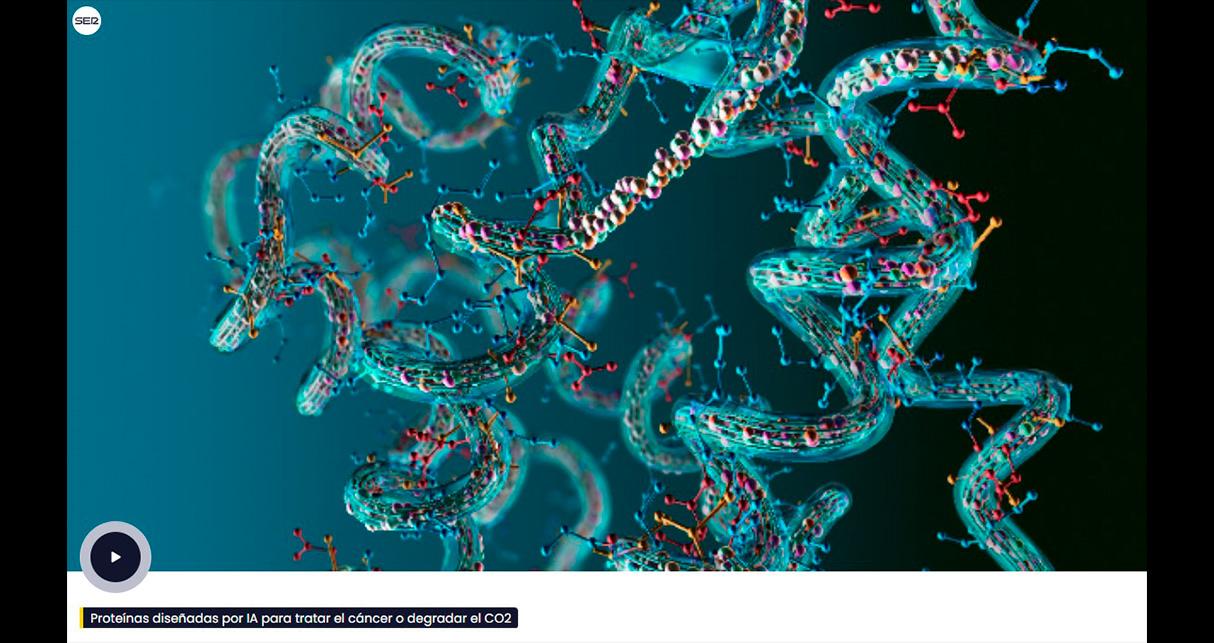New publication in eLife of the Jordan Lab in collaboration with the IBMB Imaging Platform showing that…
Cell intercalation driven by SMAD3 underlies secondary neural tube formation
- Lumen initiation follows the acquisition of neural identity and epithelial polarization
- Programmed cell death does not correlate with lumen resolution
- SMAD3 regulates the motility of central intercalating cells
- Resolution of a single central lumen requires SMAD3/YAP-mediated cell intercalation
Body axis elongation is a hallmark of the vertebrate embryo, involving the architectural remodeling of the tail bud. Although it is clear how neuromesodermal progenitors (NMPs) contribute to embryo elongation, the dynamic events that lead to de novo lumen formation and that culminate in the formation of a 3-dimensional, neural tube from NMPs, are poorly understood. Here, we used in vivo imaging of the chicken embryo to show that cell intercalation downstream of TGF-β/SMAD3 signaling is required for secondary neural tube formation. Our analysis describes the events in embryo elongation including lineage restriction, the epithelial-to-mesenchymal transition of NMPs, and the initiation of lumen formation. We show that the resolution of a single, centrally positioned lumen, which occurs through the intercalation of central cells, requires SMAD3/Yes-associated protein (YAP) activity. We anticipate that these findings will be relevant to understand caudal, skin-covered neural tube defects, among the most frequent birth defects detected in humans.
Reference:
Cell intercalation driven by SMAD3 underlies secondary neural tube formation
Elena Gonzalez-Gobartt, José Blanco-Ameijeiras, Susana Usieto, Guillaume Allio, Bertrand Benazeraf, Elisa Martí.
Developmental Cell, VOLUME 56, ISSUE 8, P1147-1163.E6, APRIL 19, 2021;
DOI:https://doi.org/10.1016/j.devcel.2021.03.023
https://www.cell.com/developmental-cell/fulltext/S1534-5807(21)00263-X#secsectitle0020




